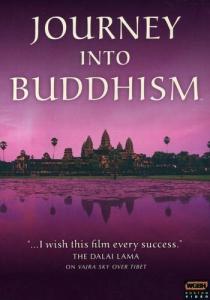Enlightening Insights: A Comprehensive Review of
Buddhism: A Concise Introduction by Huston Smith and Philip Novak
Buddhism, one of the world's oldest and most influential religions, has been a source of fascination and inspiration for many. With mindfulness, compassion, and non-attachment teachings, Buddhism offers a unique perspective on life and the human experience. In their book Buddhism: A Concise Introduction, authors Huston Smith and Philip Novak provide a comprehensive overview of this ancient philosophy.
The book begins with a brief history of Buddhism, tracing its origins in ancient India and its spread to other parts of Asia. It then delves into Buddhism's core beliefs and practices, including the Four Noble Truths and the Eightfold Path. The authors do an excellent job of explaining these fundamental concepts clearly and concisely, making them accessible to readers of all backgrounds.
One of the most intriguing aspects of Buddhism is its emphasis on mindfulness and living in the present moment. The authors highlight this by discussing the practice of meditation and its role in achieving inner peace and enlightenment. They also touch upon impermanence and the importance of accepting change, a fundamental tenet of Buddhist philosophy.
The book also explores Buddhism's various branches and schools, such as Theravada, Mahayana, and Vajrayana. Each branch has unique beliefs and practices, but they all share the goal of achieving enlightenment and freeing oneself from suffering. The authors provide an in-depth look at these branches, offering a well-rounded understanding of the diversity within Buddhism.
One of the most significant contributions of this book is its focus on the role of women in Buddhism. Unlike many other religions, Buddhism has a long history of gender equality, with women playing crucial roles as teachers and leaders. The authors shed light on this often-overlooked aspect of Buddhism, highlighting the significant contributions of female practitioners throughout history.
Smith and Novak also address some of the criticisms and misconceptions surrounding Buddhism, including the idea of Nirvana as a form of escapism and the notion that Buddhism is a pessimistic religion. They provide insightful rebuttals to these arguments, painting a more accurate picture of the religion and its teachings.
In the final chapters, the authors discuss the spread of Buddhism to the West and its integration with modern science and psychology. They explore how Buddhism's principles of mindfulness and compassion have been incorporated into various therapeutic practices, such as mindfulness-based stress reduction and cognitive-behavioral therapy.
Overall, Buddhism: A Concise Introduction is a well-written and informative book that offers a comprehensive understanding of Buddhism. Smith and Novak have done an excellent job of presenting the key elements of this complex religion in a concise and accessible manner.
In conclusion, Buddhism is a rich and nuanced philosophy that continues to inspire and guide people worldwide. Smith and Novak's book provides an excellent introduction to this ancient religion, offering readers a deeper understanding of its core beliefs and practices.






